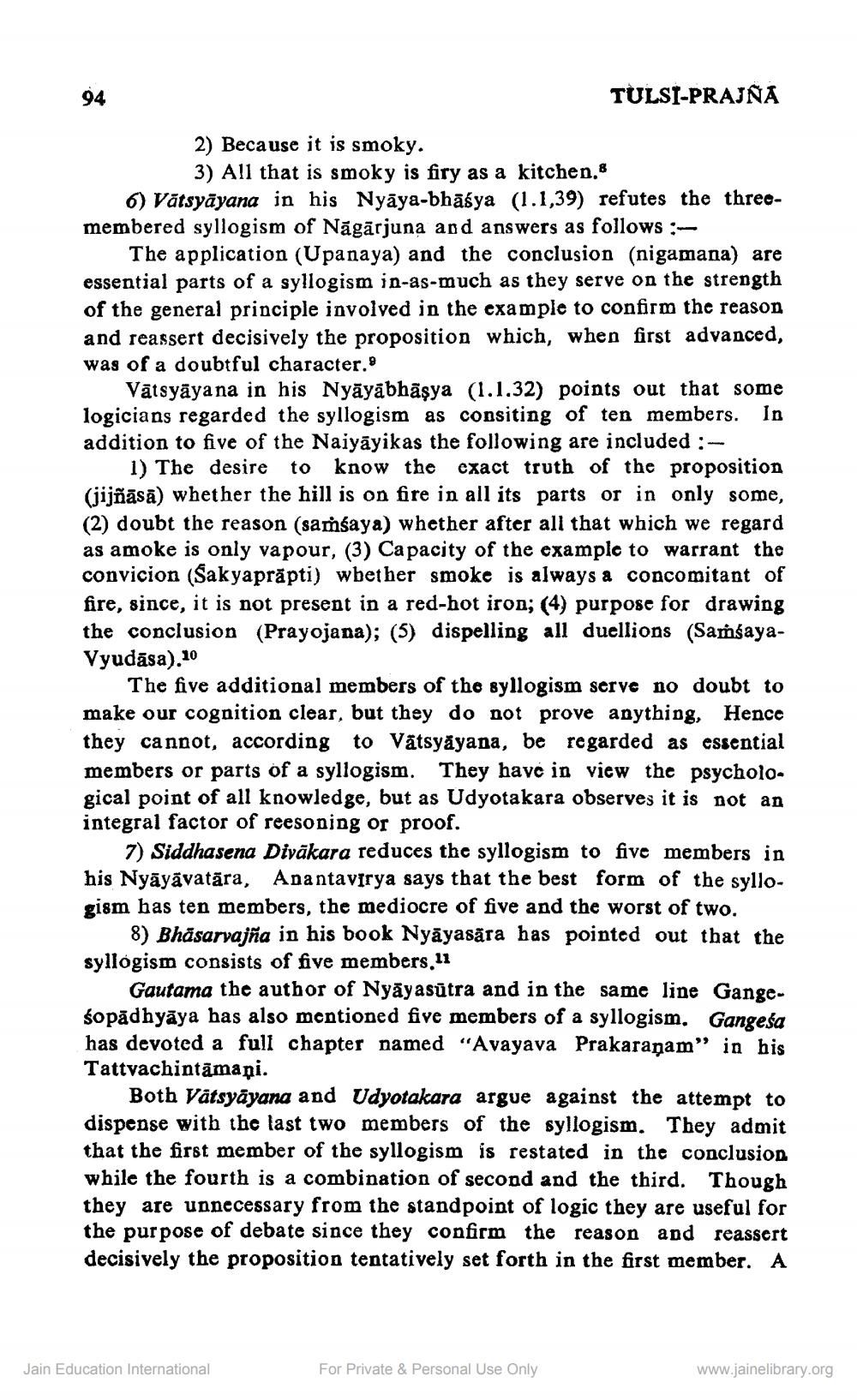________________
TULSI-PRAJNA
2) Because it is smoky.
3) All that is smoky is firy as a kitchen.& 6) Vätsyāyana in his Nyāya-bhāśya (1.1,39) refutes the threemembered syllogism of Nāgārjuna and answers as follows:
The application (Upanaya) and the conclusion (nigamana) are essential parts of a syllogism in-as-much as they serve on the strength of the general principle involved in the example to confirm the reason and reassert decisively the proposition which, when first advanced, was of a doubtful character.
Vätsyāyana in his Nyāyābhāşya (1.1.32) points out that some logicians regarded the syllogism as consiting of ten members. In addition to five of the Naiyāyikas the following are included:
1) The desire to know the exact truth of the proposition (jijñāsā) whether the hill is on fire in all its parts or in only some, (2) doubt the reason (samsaya) whether after all that which we regard as amoke is only vapour, (3) Capacity of the example to warrant the convicion (Sakyaprāpti) wbether smoke is always a concomitant of fire, since, it is not present in a red-hot iron; (4) purpose for drawing the conclusion (Prayojana); (5) dispelling all duellions (SaṁsayaVyudāsa). 10
The five additional members of the syllogism serve no doubt to make our cognition clear, but they do not prove anything, Hence they cannot, according to Vätsyäyana, be regarded as essential members or parts of a syllogism. They have in view the psycholo. gical point of all knowledge, but as Udyotakara observes it is not an integral factor of reesoning or proof.
7) Siddhasena Divākara reduces the syllogism to five members in his Nyāyāvatāra, Anantavirya says that the best form of the syllogism has ten members, the mediocre of five and the worst of two.
8) Bhäsaryaiña in his book Nyāyasära has pointed out that the syllogism consists of five members. 11
Gautama the author of Nyāyasūtra and in the same line Gangesopādhyāya has also mentioned five members of a syllogism. Gangesa has devoted a full chapter named "Avayava Prakaranam" in his Tattvachintamani.
Both Vätsyāyana and Udyotakara argue against the attempt to dispense with the last two members of the syllogism. They admit that the first member of the syllogism is restated in the conclusion while the fourth is a combination of second and the third. Though they are unnecessary from the standpoint of logic they are useful for the purpose of debate since they confirm the reason and reassert decisively the proposition tentatively set forth in the first member. A
Jain Education International
For Private & Personal Use Only
www.jainelibrary.org




